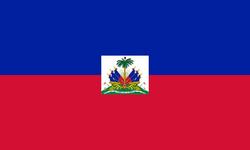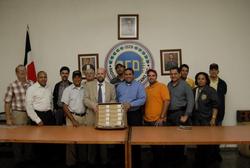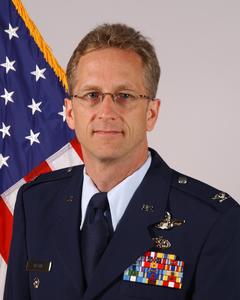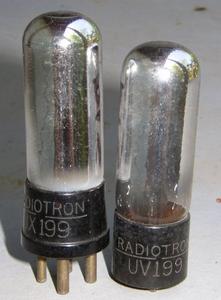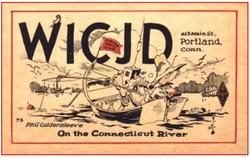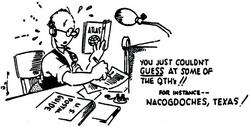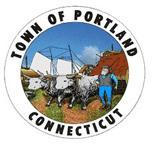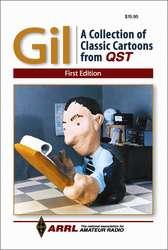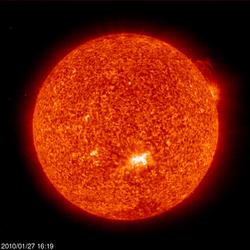 January 28, 2010 John E. Ross, KD8IDJ, Editor
| ||||||||||||
+ Available on ARRL Audio News + Public Service: Haitian Agency Announces Contact Information for Amateurs Going to Haiti to Provide Disaster Relief
The offices of CONATEL -- Haiti's national telecommunications regulator -- were destroyed in the January 12 earthquake that devastated the island nation. This office, like the FCC in the US, administers the Amateur Radio Service in Haiti. Hams interested in traveling to Haiti to help provide communications support have been at a loss as to whom to contact. CONATEL has set up temporary offices in a Port-au-Prince suburb and has indicated that those volunteers who wish to operate in Haiti to assist with disaster relief need to contact the agency to get formal reciprocal operating clearance. Read more here. + Public Service: ARRL Sends Ham Aid Equipment to Haiti
While the communications infrastructure in earthquake-ravaged Haiti is being rebuilt, there is need for Amateur Radio communications. To assist in this effort, the ARRL's Ham Aid program is providing equipment for local amateurs to use. On Friday, January 22, the League sent a programmed Yaesu VHF repeater with a microphone, as well as ICOM handheld transceivers, Yaesu mobile 2 meter rigs with power supplies and Kenwood mobile 2 meter rigs. Comet antennas, Larsen mobile antennas with magnet mounts, coax and batteries were also included in the package. Most items were donated by their manufacturers; the repeater and power supplies were purchased by the ARRL several years ago using post-Hurricane Katrina grant funds.
On January 25, Doug Lapin, K1OY, the Dominican Republic's Ambassador Accredited to the Secretary of State of Foreign Relations, stopped by ARRL Headquarters on his way back home. When he left, he carried with him 10 Kenwood handheld receivers, courtesy of the League's Ham Aid program. "We're making progress," Lapin told the ARRL on January 27. "The [Ham Aid package you sent] is stuck in customs. I'm working on getting it out. Members of the Radio Club Dominicano were much appreciative of the radios I brought and found it funny that my hand-carried radios arrived before the package. If we get it out, we will go back to Haiti tomorrow with the equipment." Read more here, including information on how you can help the Ham Aid program in Haiti. + ARRL Leadership: Kent Olson, KA0LDG, Appointed Dakota Division Vice Director
In one of her first actions as ARRL President, Kay Craigie, N3KN, has appointed Dakota Division Assistant Director and former North Dakota Section Manager Kent Olson, KA0LDG, as the new Dakota Division Vice Director. The position became vacant when Dakota Division Director Jay Bellows, K0QB, was elected International Affairs Vice President at the 2010 ARRL Board of Directors Annual Meeting and Vice Director Greg Widin, K0GW, moved into the Director position. Read more here. FCC Notice of Proposed Rule Making to Revise and Clarify Vanity Call Sign Rules Open for Comments Late last year, the FCC issued a Notice of Proposed Rule Making (NPRM) -- WT Docket 09-209 -- seeking to amend the Commission's Amateur Radio Service rules to clarify certain rules and codify existing procedures governing the vanity call sign system, as well as revise certain rules applicable to club stations. Interested parties may make comments on the NPRM in the following ways: via the Federal eRulemaking Portal or via the FCC's Web site. Comments must be submitted by March 26, 2010; reply comments are due no later than April 12, 2010. + The Doctor Is IN: Tubes and Tube Replacements Rick Richardson, VE7WF, of New Westminster, British Columbia, recently has acquired some vintage vacuum tube-based equipment. He recalled that years ago, there was a product on the market -- Tubesters -- solid state replacements for vacuum tubes. He asked the ARRL's Doctor if anyone still manufactures such devices. Here's what the Doctor had to say: I do remember them, as well. If I recall, these were popular in the 1970s. To my knowledge, they are no longer available. You may find some on Internet auction sites from time to time. But before you go too far in that direction, I would think about what problem you are trying to solve. Old tube gear works very well with tubes, probably with better performance than "force fit" solid state replacements. In those days, many solid state receivers were quite vulnerable to overload and other problems, for example.
The nice thing is that most tubes are still available, often unused in original boxes and generally at similar prices to what they cost 50 years ago. An Internet search will turn up a number of places that sell tubes. I've always had good luck with Antique Electronic Supply. If used within their ratings, tubes can last many years. I have WW2 vintage equipment that still works with some original tubes. I also have Drake tube based equipment from the period still going strong. ARRL Lab Engineer Bob Allison, WB1GCM -- an amateur with years of dedicated experience with vintage gear -- notes that if the equipment has sat around for many years, the chances are the tubes are gassy. The glass part of a tube is not a perfect envelope. One molecule of air at a time leaks into the tube and after a few years, the performance degrades. If a tube hasn't been used in 20 or 30 years, it can appear to be totally dead. The trick to solve this to let the radio run for a day or two. The filaments in the tubes will eventually burn away whatever air is inside and the tubes will often be back in good shape. The only exception that I often make is to replace power rectifiers with plug-in solid state equivalents. I usually make my own, but they are also commercially available. My rationale is that rectifier tubes generate a lot of heat the old gear doesn't need. In addition, the filaments can draw 15 to 20 W and by removing that load from the power transformer it should stay cool and last longer. Unlike tubes, power transformers are not so easy to find. If needed, the original condition can be restored by unplugging the solid state unit and putting the tube back. Thanks Doctor! Do you have a question or a problem? Send your questions via e-mail or to "The Doctor," ARRL, 225 Main St, Newington, CT 06111 (no phone calls, please). Look for "The Doctor Is IN" every month in QST , the official journal of the ARRL. + ARRL Audio News Temporarily Suspended With the coming of the new ARRL Web site, we are looking at ways to better bring you Amateur Radio news. In order to do this properly, we will be temporarily suspending the ARRL Audio News while we look for solutions that will enable us to provide the technical quality and distribution channels that you expect from the ARRL. The last edition of the ARRL Audio News (for now) will be produced on Thursday, January 28. + Now You Know!: Phil "Gil" Gildersleeve, W1CJD By ARRL News Editor S. Khrystyne Keane, K1SFA Longtime readers of QST will certainly remember the cartoons of Phil Gildersleeve, W1CJD (ex-1ANE). Known affectionately as "Gil," he drew more than 1500 cartoons for the ARRL, many of them appearing on the pages of QST.
Gil started cartooning for the ARRL back in June 1927. His characters -- such as Jeeves the Butler and the gang at the Podunk Hollow Radio Club -- became old friends to readers of QST. Gil's first Jeeves cartoon was published in February 1940: From the other room comes his master's voice, saying, "Jeeves, come here and help me look for DX!" Jeeves, not really sure what exactly DX is, comes on the run with a road map, a telescope, binoculars, a lantern, a compass and a butterfly net in hand! As a native of the great state of Texas, my favorite Jeeves cartoon shows him trying to push a giant QSL card (from Texas, of course!) through the door -- the card can barely get through. Of course, things are bigger in Texas! If you ever tour ARRL Headquarters, you can see a large version of this cartoon in the second floor hallway. The mythical Podunk Hollow Radio Club depicted the idiosyncrasies of a group of radio enthusiasts getting together. The cover for the June 1964 issue of QST shows the Podunkers -- hundreds of them -- happily camped out in a forest setting. In the large tent in the rear, several hams are operating their radios. In the foreground, several more are chatting up a couple of attractive girls in a convertible, little cartoon hearts fluttering over one ham's head. And off to the far right, the Department of Conservation is beginning to set up their blasting apparatus with its accompanying signs of "Turn off all two-way radios!"
But Gil also used his cartoons to teach proper on-the-air behavior. In March 1938, he drew an eight panel cartoon of a man calling CQ on CW. Each panel had the man getting older, where by the seventh panel, he was old, bald and with a long beard, spider webs all around. The last panel showed a tombstone that read "Here lies C. Q. McGall. He died without even signing his call." The next month, Gil drew a single panel cartoon with a line separating the panel into two parts. In the first part, he showed a radio amateur "all worn to a frazzle" from handling so much traffic, as well as dealing with QRM. The second half showed two amateurs handling traffic as a team, "all full of vim and vigor." Gil's point was spot-on: "Cooperative operating does a better job with greater efficiency all around. Instead of harassed, inefficient, overworked operators, put key stations on a 6 or 8 hour basis, with relief and second operators for efficiency during intensive operation." Gil's interests were not limited to ham radio. A native of Portland, Connecticut, he began working for the Middletown (CT) Press as the Portland correspondent in 1940, became county editor in 1943 then city editor in 1945. Sometime later, he was named news editor. His cartoons also decorated the Press and various trade journals. He served in the volunteer fire company and was captain of Fire Company No 2 for nine years, as a member of the Portland Board of Education for eight years, and as a vestryman in his local church.
In 1966, he was chairman of Portland's 125th anniversary celebration. As part of the celebration, he drew the town seal, depicting a number of elements of historical Portland. Foremost is an old-time oxen driver with his team, pulling a large brownstone sling; the greater part of Portland's 19th century wealth came from the brownstone industry. To the left of the oxen is a small building like those visible in old pictures of the quarries. Its tall chimney is smoking, connoting industry. To the right is another such building atop the quarry wall with a pulley for lowering things into the quarry.
Gil passed away on November 4, 1966. "His work became a tradition," wrote former QST Managing Editor Laird Campbell, W1CUT (SK) in the foreword of Gil: A Collection of Classic Cartoons from QST. "His knack for expressing ideas, feelings or situations unique to Amateur Radio was, and still is, unexcelled. [He] could take a rudimentary idea and turn it into a final masterpiece through the uncanny strokes of his pen. Gil's creations will never be forgotten...his conceptions remain alive in the minds of both old-timers and newcomers to Amateur Radio." Now you know! Solar Update
Tad "Who countest the steps of the Sun" Cook, K7RA, reports: We've seen average daily sunspot numbers for this reporting week. Since last Thursday through yesterday, the numbers rose more than 9 points to 28; the average solar flux slipped more than 2 points to 81.9. Geomagnetic indices were a tiny bit lower. We should be seeing sunspot numbers decline over the next five days. The predicted solar flux for January 28-31 is 78, 80 on February 1-2, 82 on February 3-4 and 88-89 for the following six days. We don't see any geomagnetic upset predicted until February 16, with the planetary A index only rising to 10. On the STEREO image, we can see sunspot 1041 in the Sun's southern hemisphere, past the central meridian. We also see a sunspot emerging from the unseen area of the sun (currently around 12.5 percent, not visible yet to the STEREO mission) that is perhaps five days from emerging over the Sun's eastern limb. Look for more information in the Solar Update -- including some clarification, correction and expansion of the info in last week's bulletin concerning SID (Sudden Ionospheric Disturbance) events from Dick Grubb, W0QM of the Space Weather Prediction Center in Boulder, Colorado -- available on the ARRL Web site on Friday, January 29. For more information concerning radio propagation, visit the ARRL Technical Information Service Propagation page. This week's "Tad Cookism" brought to you by William Blake's Ah! Sunflower. This Week on the Radio This week, there is a running of the NCCC Sprint on January 29. The CQ 160 Meter Contest (CW) is January 29-31. The REF Contest (CW), the UBA DX Contest (SSB) and the SPAR Winter Field Day are January 30-31. The Classic Exchange (CW) is January 31-February 1. Next week, there is another running of the NCCC Sprint Ladder on February 5. Look for the FYBO Winter QRP Sprint, the Minnesota QSO Party and the AGCW Straight Key Party on February 6. The Vermont QSO Party, the YL-ISSB QSO Party (CW), the 10-10 International Winter Contest (SSB), the British Columbia QSO Party, the Delaware QSO Party and the Mexico RTTY International Contest are February 6-7. On February 7, check out the North American Sprint (CW) and the ARCI Fireside SSB Sprint. The New Mexico QSO Party is February 8. The ARRL School Club Roundup is February 8-12. The NAQCC Straight Key/Bug Sprint is February 10 and the CWops Mini-CWT Test is February 10-11. All dates, unless otherwise stated, are UTC. See the ARRL Contest Branch page, the ARRL Contest Update and the WA7BNM Contest Calendar for more info. Looking for a Special Event station? Be sure to check out the ARRL Special Event Station Web page. ARRL Continuing Education Course Registration
Registration remains open through Sunday, February 21, 2010, for these online course sessions beginning on Friday, March 5, 2010: Amateur Radio Emergency Communications Level 1; Antenna Modeling; Radio Frequency Interference; Antenna Design and Construction; Ham Radio (Technician) License Course; Propagation; Analog Electronics, and Digital Electronics. To learn more, visit the CEP Course Listing page or contact the Continuing Education Program Coordinator. | ||||||||||||
